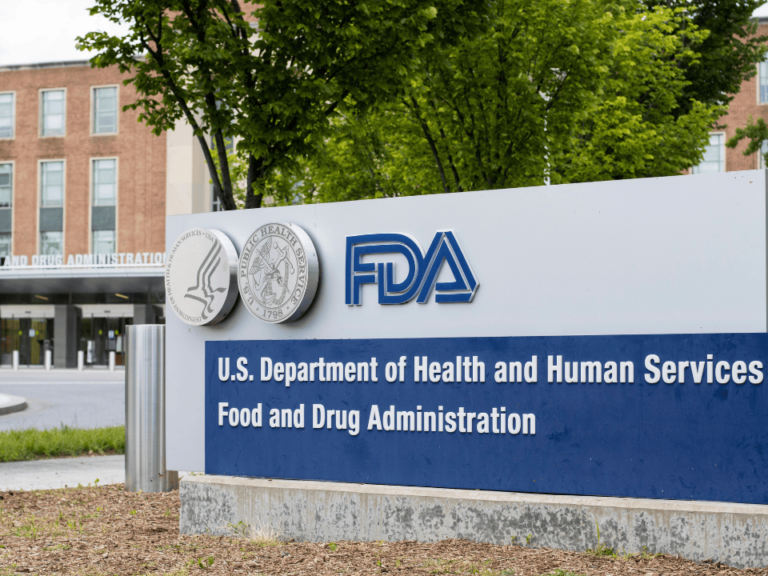FDA officials said drug sponsors will soon be required to conduct randomized studies to determine optimal dosages of cancer drugs before proceeding to testing safety and efficacy in pivotal trials.
Last month, the agency told Amgen Inc. to go back and test a lower dose of sotorasib (Lumakras), a RAS GTPase family inhibitor, for adult patients with KRAS G12C mutated locally advanced or metastatic non-small cell lung cancer determined by an FDA approved test, who have received at least one prior systemic therapy.
The agent received an accelerated approval for the indication, but FDA required dosage studies as part of the company’s post-marketing commitments.
“The approved 960 mg dose is based on available clinical data, as well as pharmacokinetic and pharmacodynamic modeling that support the approved dose,” the agency said in an announcement May 28. “As part of the evaluation for this accelerated approval, FDA is requiring a post-marketing trial to investigate whether a lower dose will have a similar clinical effect.”
The company had been signaling that it would need to look back at the dose.
A month before the accelerated approval was finalized, in a call with analysts, David Reese, executive vice president, research and Development, at Amgen, said the company was planning to compare the 960 mg dose with a 240 mg dose.
“Although, we have demonstrated that the 960 mg dose is safe and efficacious in advanced non-small cell lung cancer, we continue to explore different doses and regimens as is common in oncology drug development,” Reese said.
“As part of this effort, we are initiating a new cohort to determine whether a once-daily oral dose of 240 milligrams maintains the safety and efficacy profile of the 960 mg dose in patients with advanced non-small cell lung cancer,” Reese said. “Should a lower dose be as safe and efficacious as 960 mg, it may further enhance the patient experience with one-daily Lumakras.
“We expect the results from this study in late 2022 or early 2023, and do not expect any impact on the timelines of our ongoing priority review.”
Earlier this week, FDA officials elaborated on their thinking regarding dosage studies. Going forward, sponsors would be expected to settle the questions of dosage first, Richard Pazdur director of the FDA Oncology Center of Excellence and acting director of the Office of Oncologic Diseases in the FDA’s Center for Drug Evaluation and Research, said in a conversation with STAT.
“It’s very, very difficult to retrofit a lower dose after the typical study is done, for obvious reasons,” Pazdur said June 9. “You can have a survival advantage of time to event endpoint. You can’t ask them to repeat a study. So, we’re kind of retrofitting a dose. That work should be done before the study is initiated—before the registration study—albeit whether it’s a single-arm trial or whether it be a randomized study.”
A generation ago, oncologists had a heroic view of dosage. In phase I studies chemotherapy was tested to determine the maximum tolerated dose—MTD for short—and that was the standard dose given.
More heroic oncologists sped past the MTD, as was the case with high-dose chemotherapy with bone marrow transplantation for breast cancer. Logical as it sounded, this intervention didn’t work (The Cancer Letter, April 16, 1999).
“We have a culture here that more is better, more is better, and this is probably best exemplified by the fiasco that oncology underwent looking at high dose chemotherapy with autologous support that showed no benefit decades ago,” Pazdur said in an interview with STAT.
In the 1990s, the agency didn’t review the dosage of chemotherapy drugs used in this therapy, arguing that doctors were using approved drugs off-label. However, the agency has a guidance to industry—on the books since 1996—which suggests that dosage should be determined before the pivotal trials begin (The Cancer Letter, Sept. 21, 2018).
“This information can help identify an appropriate starting dose, the best way to adjust dosage to the needs of a particular patient, and a dose beyond which increases would be unlikely to provide added benefit or would produce unacceptable side effects,” the guidance reads.
The MTD concept doesn’t apply to newer-generation drugs, which take precise aim at molecular targets or activate the immune system. Instead of searching for the MTD, drug developers working with kinase inhibitors or monoclonal antibodies should seek to determine the lowest dose that produces the maximum biologic and clinical effect, clinical pharmacology experts say.
We have a culture here that more is better, more is better, and this is probably best exemplified by the fiasco that oncology underwent looking at high dose chemotherapy with autologous support that showed no benefit decades ago.
The reason for this is simple: after the receptor is saturated, excess drug produces unnecessary toxicity. However, sponsors are reluctant to go back and relitigate the dose once their drugs are approved.
“We applaud Dr. Pazdur and his FDA colleagues for this historic step, which will reduce toxicities and benefit patients,” wrote a group of physician-scientists who, over many years, spearheaded an effort to convince industry and FDA to move away from MTD. “It is also a wakeup call for the entire oncology drug development enterprise.”
The editorial appears here.
Earlier this year, two physicians who drove this effort—Mark Ratain, the Leon O. Jacobson Professor of Medicine, director of the Center for Personalized Therapeutics at The University of Chicago, and director of Optimal Cancer Care Alliance, and Allen S. Lichter, chair of the Optimal Cancer Care Alliance—focused on Amgen’s sotorasib, urging the agency to mandate studies of lower doses.
“We urge the FDA to require Amgen to optimize the dose as a condition of the likely accelerated approval. We also urge the FDA to require all sponsors submitting an NDA to provide evidence of dose optimization in accordance with its own Guidance document, with the exception of breakthrough drugs, for which optimizing the dosing regimen after approval (as a post-marketing requirement) would be permitted,” Ratain and Lichter wrote in an editorial in The ASCO Post.
Ratain and Lichter have been persistent in shaming their colleagues, drug companies, and FDA to abandon excessive dosing.
A non-profit they founded is trying to conduct randomized trials aimed at optimizing dosing of marketed drugs (The Cancer Letter, June 2, 2017).
Earlier, their criticism focused on the dosage regimens for drug ibrutinib, a drug marketed by Pharmacyclics and Janssen (The Cancer Letter, April 13, 2018; May 18, 2018).









